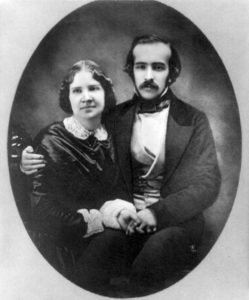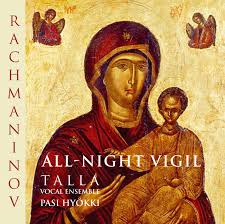O Come, O Come Emmanuel This is based on the five antiphons for the Magnificat on the days before Christmas.
Jenny Lind and Otto Goldschmidt
A Tender Shoot was written by the German pianist, conductor and composer Otto Goldschmidt (1829–1907). He was from a German Reform Jewish family, and studied under Hans von Bulow, Felix Mendelssohn, Mortitz Hauptman, and Clara Schuman. He married the famous Swedish soprano Jenny Lind, nicknamed ‘The Swedish Nightingale’. He converted to the Church of England and settled in England. He founded The Bach Choir with whom he gave the first complete performance in Britain of Bach’s B minor Mass.
I Know a Rose Tree Springing. Goldschmidt’s A Tender Shoot and this hymn are both descended from the German Es ist ein Rose’ entsprungen, which in turn is based on Isaiah 11:1: “There shall come forth a shoot from the stump of Jesse, and a branch shall grow out of his roots” and on Isaiah 35:1: “The wilderness and the solitary place shall be glad for them; and the desert shall rejoice, and blossom as the rose.”
The O Antiphon, O Radix Jesse, is also based on this text, and is used in O Come, O Come Emmanuel: “O come Thou rod of Jesse’s stem.”
O Root of Jesse most clearly reminds us on Jesus’ rootedness in Jewish history. He does not enter into the world isolated, detached from what has come before. Instead, God continues His relationship with mankind by coming into the smallest of nations. It is through this insignificant people that all peoples can receive God’s mercy and love. Even within this small nation, Jesus is born to the withered stump of a royal line; the Son of God is born into obscurity, of Mary, a Jewish maid from a small town.
The tune was first published in 1582 and was harmonized by Michael Praetorius (1571 – 1621), a German composer, organist, and music theorist. He was one of the most versatile composers of his age, being particularly significant in the development of musical forms based on Protestant hymns, many of which reflect an effort to improve the relationship between Protestants and Catholics. The tune is used in the 1979 Love Story and in the 2009 The Time Traveler’s Wife.
Bogoroditse Devo – Rejoice, O virgin mother of God. by Sergei Rachmaninov. This is from the All Night Vespers, which Rachmaninoff composed in 1915. It combines modern harmonic progressions with a variety of different textures. In the beginning, all the parts are singing the same rhythm (homophony). This musical technique makes the voices feel as one unit like a monastic chant.
The middle section of the piece that builds into the climax features the different choral parts singing different melodies (polyphony). Rachmaninoff creates a sense of motion as the alto lines meander while the other voices sing slowly rising sustained notes. The polyphony builds to a euphoric climax and then gently relaxes until all the voices come back together in the last measures moving with homophony into quiet reflection.
Michael Praetorius
Come Thou Redeemer of the Earth. J. M. Neale (1818-1866) translated the hymn Veni Redemptor gentium by St. Ambrose (340-397), in which he celebrates the Virgin Birth. Mary is the new Temple, for in her God Himself dwells in bodily form. In her womb the divine and human nature were eternally wedded, and from that bridal chamber Jesus goes forth like a giant, divine and human, to run his course. He comes forth from the Father, descends into death and Hell, and reascends to the throne of God. He saves us from death by giving us His own “deathless might.”
Praetorius also harmonized this tune, puer nobis nascitur. It probably predates him and may have folk origins.


